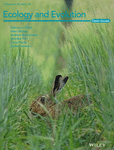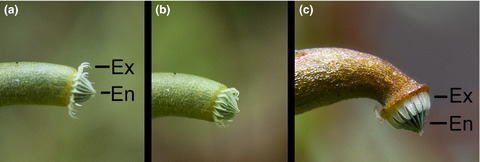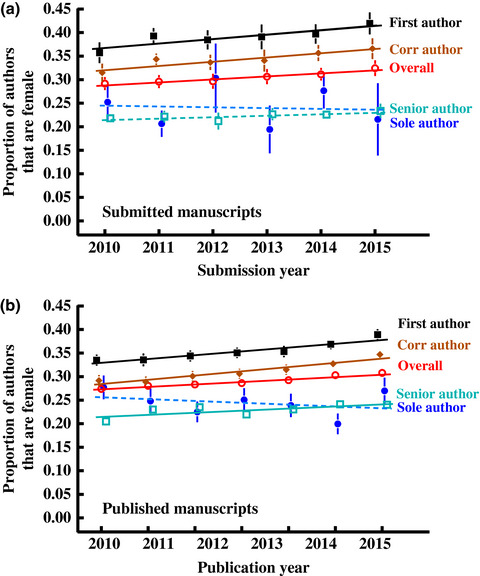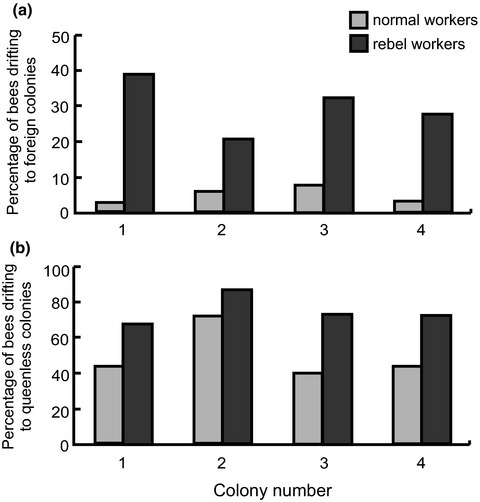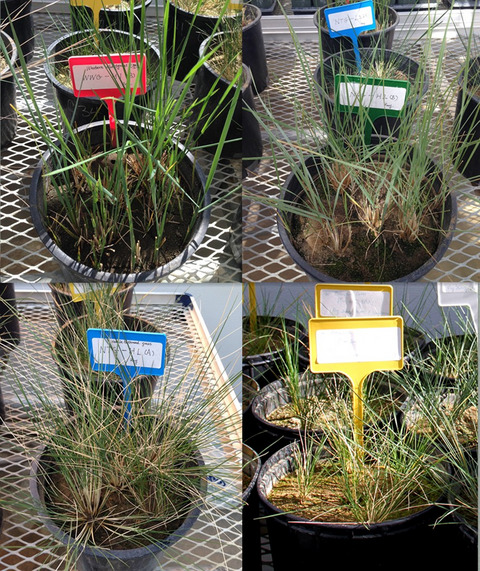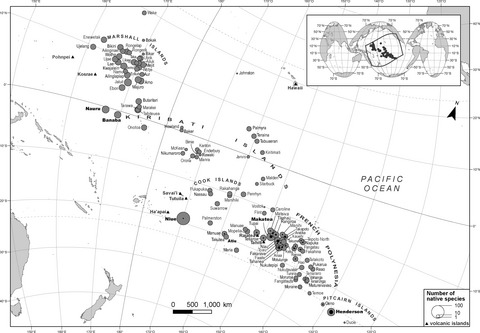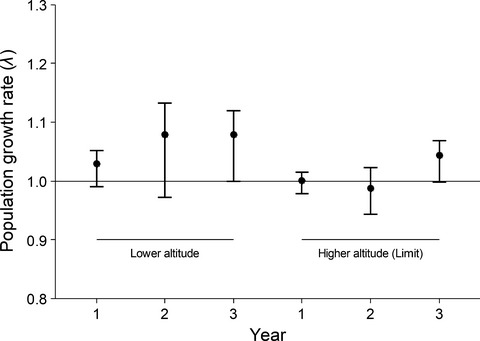Journal list menu
Export Citations
Download PDFs
ISSUE INFORMATION
ORIGINAL RESEARCH
Functional coordination between leaf traits and biomass allocation and growth of four herbaceous species in a newly established reservoir riparian ecosystem in China
- Pages: 11372-11384
- First Published: 08 November 2018
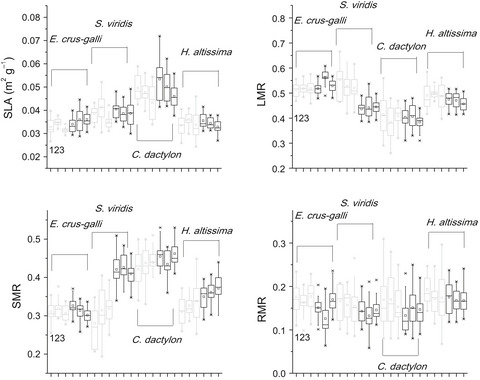
We linked plant functional traits of four representative dominant C4 herbaceous species (Setaria viridis, Echinochloa crusgalli, Cynodon dactylon and Hemarthria altissima) to their relative growth rate, under ambient and elevated temperatures. The RGR was captured adequately by the SMR, which can therefore be considered as a powerful functional marker of species’ functioning in this newly established reservoir riparian ecosystem.
Genetic and chemical divergence among host races of a socially parasitic ant
- Pages: 11385-11398
- First Published: 06 November 2018
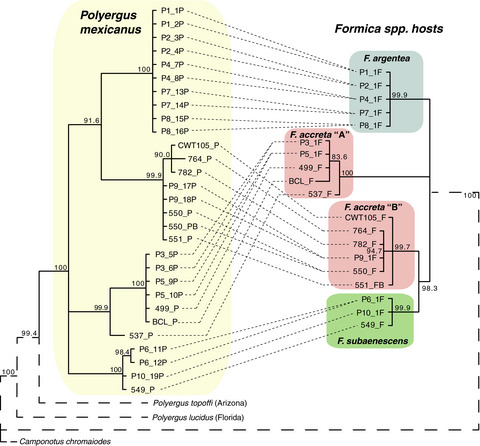
Ant colonies are a rich resource for potential parasites, and numerous species have evolved to use them as hosts. Here, we perform genetic and chemical analyses of a socially parasitic ant that kidnaps other ant species and uses them as hosts. We show that sympatric parasite colonies that use particular hosts are genetically differentiated from colonies using other host species, suggesting the formation of host races, and initial stages of speciation.
The shadow of the past: Convergence of young and old South American desert lizards as measured by head shape traits
- Pages: 11399-11409
- First Published: 26 November 2018
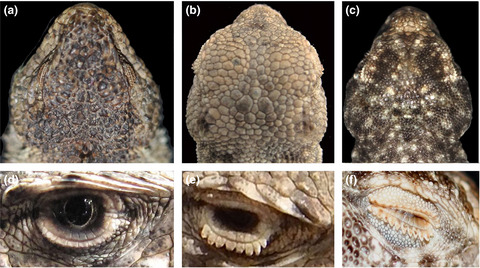
Convergent evolution in South American lizards. In this study we test if natural selection was stronger than historical contingency in the putative convergence of head traits between an old lizard lineage (Ctenoblepharys adspersa) and younger lizards (Liolaemus species) living in the extreme desert environments of the South American Pacific coast. We found a strong case of convergence between the younger lizards, and between these and C. adspersa. Our results suggest that natural selection was probably more important than historical contingency in the independent evolution of these head traits.
Estimates of gene flow and dispersal in wild riverine Brook Trout (Salvelinus fontinalis) populations reveal ongoing migration and introgression from stocked fish
- Pages: 11410-11422
- First Published: 14 November 2018
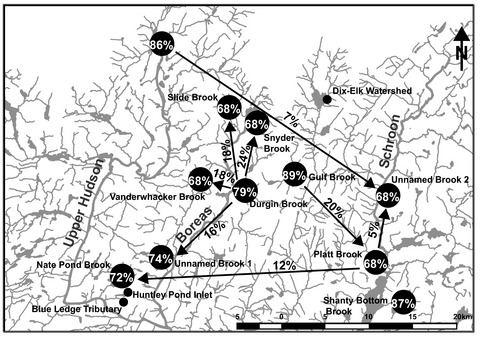
As anthropogenic impacts accelerate changes to landscapes across the globe, understanding how genetic population structure is influenced by habitat features and dispersal is key to preserving evolutionary potential at the species level. We examined these issues in Brook Trout (Salvelinus fontinalis) populations residing in the Upper Hudson River watershed of New York State by investigating the spatial genetic structure of over 350 fish collected from 14 different sampling locations encompassing three river systems. The methods and data presented here may aid in the development of other fisheries-focused conservation plans that incorporate a molecular perspective.
Benthic biogeographic patterns in the southern Australian deep sea: Do historical museum records accord with recent systematic, but spatially limited, survey data?
- Pages: 11423-11433
- First Published: 08 November 2018
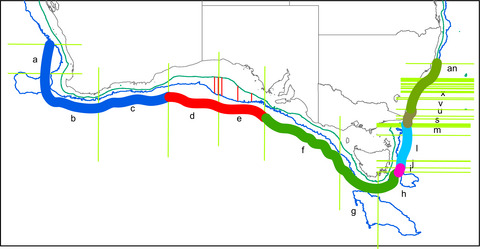
Historical data from Australian museum records are used to develop a deep-sea biogeography for the southern Australian continental slope and indicate that the under-sampled south-facing coastline is distinct from the more heavily sampled eastern coastline. A recent systematic survey of the central Great Australian Bight on the south coast showed similar assemblage structure to that derived from the ad hoc collection of samples from close to 200 years represented in the museum collections.
Early returning long-distance migrant males do pay a survival cost
- Pages: 11434-11449
- First Published: 14 November 2018
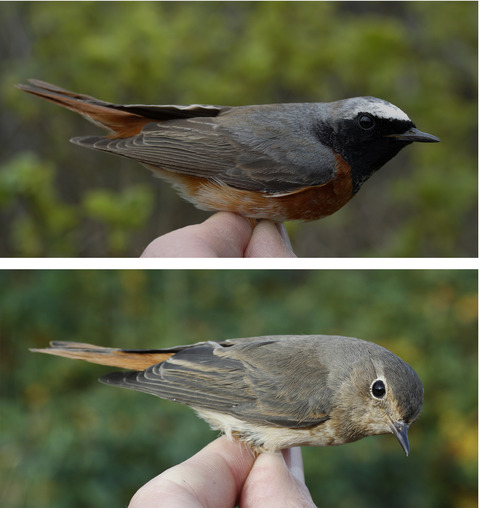
Insectivorous migrants benefit from returning early to breed but if returning too early likely suffer a survival cost. Ringing data of eight songbird species support a pattern of decreasing survival with arrival date in spring for short-distance migrants and a bell-shaped relationship for long-distance migrants. In protandric species, the majority of males return before survival is optimal whereas females on average return close to the survival optimum.
Habitat segregation between brown bears and gray wolves in a human-dominated landscape
- Pages: 11450-11466
- First Published: 11 November 2018

Identifying how sympatric species belonging to the same guild coexist is a major question of community ecology and conservation. We analyzed the degree of interspecific segregation in habitat selection between wolves and brown bears. We found that habitat segregation was larger than expected by chance, which suggests habitat segregation as a possible mechanism used by both species to coexist.
Longitudinal variation in fish prey utilization, trophic guilds, and indicator species along a large subtropical river, China
- Pages: 11467-11483
- First Published: 26 November 2018
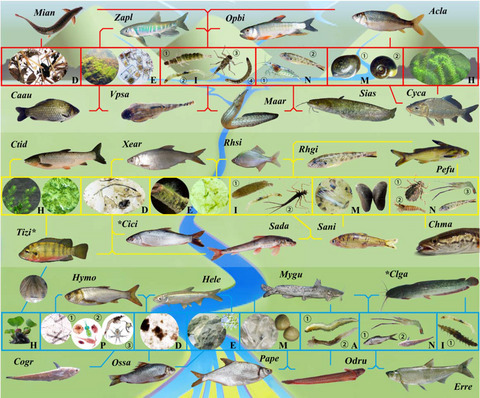
We analyzed the diet composition (DC) of 96 fish species and identified 29 prey taxa along the subtropical East River, China. Based on DC matrix, 17 prey-oriented fish guilds were clustered and 28 indicator species of trophic links, which explained > 80% of the environmental and prey variables, were selected. Spatial variation in fish trophic structures was determined by the utilization on (a) upstream insects and epiphytes, (b) midstream hydrophytes, molluscs and nekton, and (c) downstream annelids, plankton and sediment by site-specific fish assemblages. The longitudinally decreasing insects and increasing detritus in DC were two vectors characterizing fish feeding pathways, which distinguishes the East River from temperate rivers.
Under which humidity conditions are moss spores released? A comparison between species with perfect and specialized peristomes
- Pages: 11484-11491
- First Published: 08 November 2018
Patterns of authorship in ecology and evolution: First, last, and corresponding authorship vary with gender and geography
- Pages: 11492-11507
- First Published: 08 November 2018
Intercontinental migration pattern and genetic differentiation of arctic-alpine Rhodiola rosea L.: A chloroplast DNA survey
- Pages: 11508-11521
- First Published: 23 November 2018
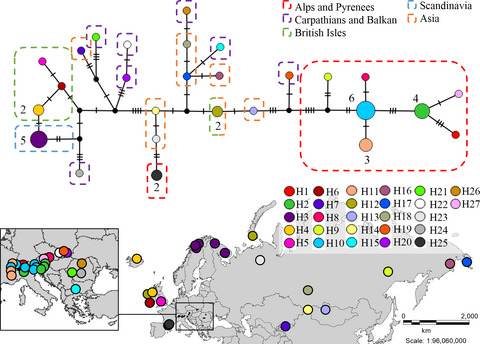
Our study explores high resolution in six regions of the plastid DNA of Rhodiola rosea a widely distributed arctic-alpine perennial species of the Northern Hemisphere. Rhodiola rosea can be handled as a model plant in studying how arctic-alpine species originated in the Qinghai-Tibetian Plateau have spread all over the Northern Hemisphere. Our study reveals several diversity hotspots for this species and provides two hypotheses, both including the European Alpine System and the British Isles as major diversification center.
The Bogert effect revisited: Salamander regulatory behaviors are differently constrained by time and space
- Pages: 11522-11532
- First Published: 22 November 2018
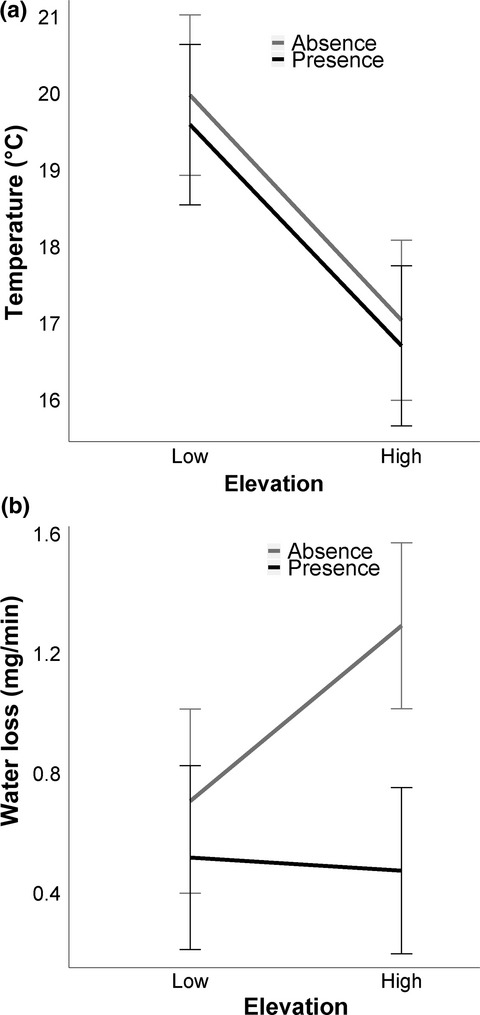
The term Bogert effect refers to behavioral compensation entailing microhabitat selection to maintain performance across a gradient of environmental conditions. We found that salamanders were able to maintain waterloss rates but not temperature through microhabitat selections across low and high elevation sites. This microhabitat selection may help buffer species from some effects of climate change.
Use of auto-germ to model germination timing in the sagebrush-steppe
- Pages: 11533-11542
- First Published: 14 November 2018

This manuscript describes the Auto-Germ Excel workbook, which allows users to estimate field germination timing based on wet-thermal accumulation models and field data. Predictive modeling has the potential to educate researchers and land managers in knowing when seeding practices should occur to optimize planting dates so seeds are more likely to germinate during conditions favorable for plant establishment. To demonstrate the capabilities of Auto-Germ, we calculated various germination indices and modeled germination timing for 11 different species, across 6 years, and 10 Artemisia-steppe sites in the Great Basin of North America to identify the planting date required for 50% or more of the simulated population to germinate in spring (1 March or later), which is when conditions are predicted to be more conducive for plant establishment.
Cumulative reproductive costs on current reproduction in a wild polytocous mammal
- Pages: 11543-11553
- First Published: 14 November 2018
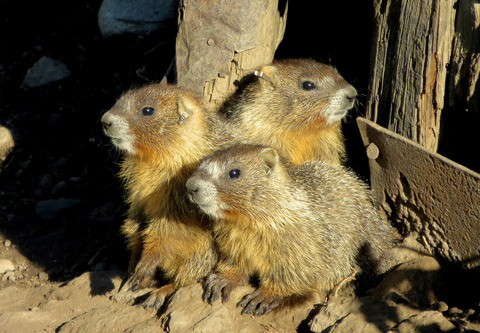
The prevalence and magnitude of cumulative reproductive costs in natural age-structured populations and their importance in shaping environment-specific reproductive strategies alongside short-term reproductive costs remain little understood. We provide evidence supporting cumulative long-term but not short-term costs in wild female yellow-bellied marmots and show that females weaned larger litters when they had weaned larger litters on average in previous years, but had lower current reproduction probability when their previous reproductive success was low. Together, our results suggest that, alongside persistent among-individual variation, long-term reproductive history affects current reproductive success.
Vegetation trends over eleven years on mountain summits in NW Argentina
- Pages: 11554-11567
- First Published: 14 November 2018
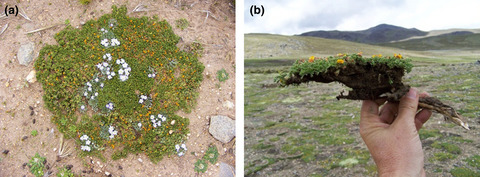
We assessed vegetation dynamics on four summits (4,040 to 4,740 m a.s.l.), in NW Argentina, during 9/11-yr period (2006/8-2017). We found that mean and minimum soil temperature and topography (elevation and aspect) were the primary environmental determinants of plant cover, species richness, and diversity. Greater plant cover and species richness tended to occur at the lower summits and in the warmer eastern aspects, while the lower species richness and diversity occurred in the highest summit and the colder southern aspects. After 11 years, we observed that species number increased in the lower summit, plant cover increased in the highest summit and diversity index increased in the four summits. The observed trend in plant community dynamics may responds to short-term temperature and precipitation variability, which is influenced by El Niño Southern Oscillation (ENSO).
Differences in the fungal communities nursed by two genetic groups of the alpine cushion plant, Silene acaulis
- Pages: 11568-11581
- First Published: 21 November 2018
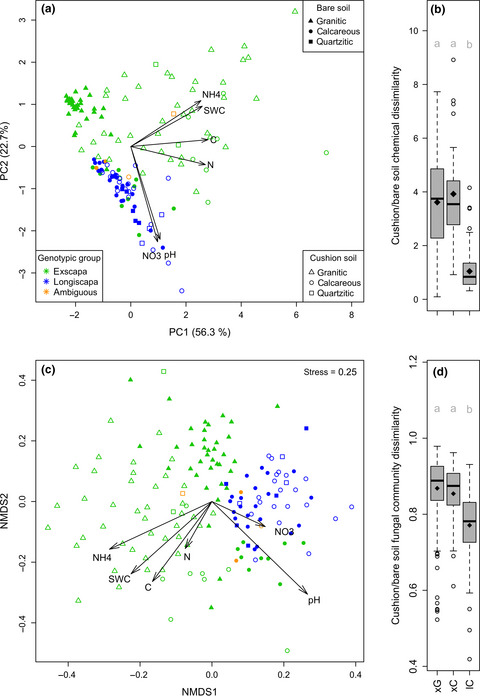
We report four main findings. First, the two local S. acaulis subspecies exhibit differential soil abiotic engineering. Second, fungal communities beneath cushions of the two plant subspecies are largely different, thus related to genotype variability. Third, the differences are in part be explained by a differential soil abiotic engineering. Finally, this divergence is most pronounced for fungal species that tightly interact with plants including putative phytopathogenic fungi.
Consequences of shade management on the taxonomic patterns and functional diversity of termites (Blattodea: Termitidae) in cocoa agroforestry systems
- Pages: 11582-11595
- First Published: 10 November 2018
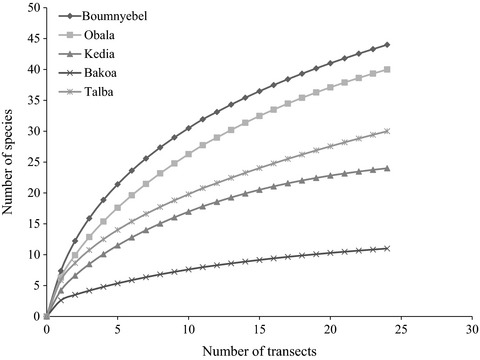
We tested the hypothesis that patterns of termite species richness in different cocoa agroforestry types are related to responses by termite functional groups to changes in shade management. Functional group pattern differed significantly in all the cocoa agroforestry systems and within each agroforestry system and dominated by wood and litter feeder species. Shade maintenance in cocoa agroforests is valuable in reducing termite pest species and conserving soil-feeding termites which provide beneficial ecosystem services.
Numerical response of mammalian carnivores to rodents affects bird reproduction in temperate forests: A case of apparent competition?
- Pages: 11596-11608
- First Published: 20 November 2018
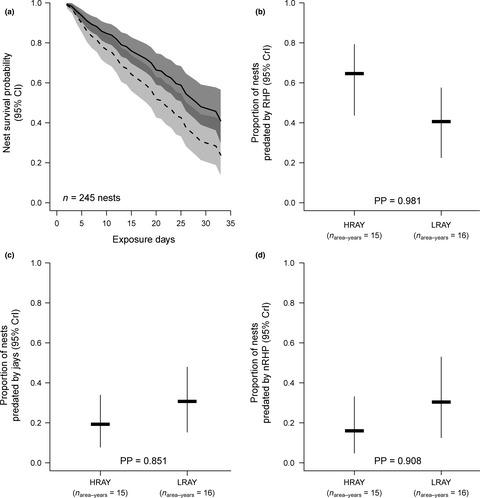
In temperate forests driven by mast seeding, different seed and nonseed consumers are linked over multiple trophic levels via direct predation and shared predators. We found a rodent-mediated aggregative numerical response of rodent-hunting predators, which incidentally prey on the wood warbler's ground nests and thereby decrease its reproductive performance. This pattern seems to fit apparent competition, where an increase in one species coincides with the decrease of another species mediated by shared predators.
Asymmetric response of different functional insect groups to low-grazing pressure in Eurasian steppe in Ningxia
- Pages: 11609-11618
- First Published: 17 November 2018
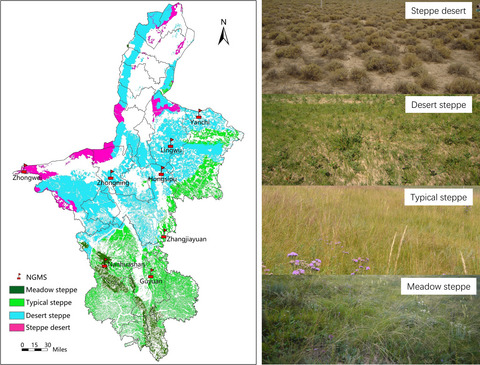
The abundances of herbivores, predators, and parasitoids were higher in enclosed regions than in low-grazing regions, while there was no significant difference in pollinators. The parasitic wasp/prey ratio was higher in enclosed regions than in low-grazing regions in meadow steppe and typical steppe, while there were no significant differences between the enclosed and low-grazing regions in desert steppe and steppe desert. Herbivores were observed to benefit more from enclosures than predators, parasitoids, and pollinators.
Habitat selection by the European hare in arable landscapes: The importance of small-scale habitat structure for conservation
- Pages: 11619-11633
- First Published: 13 November 2018
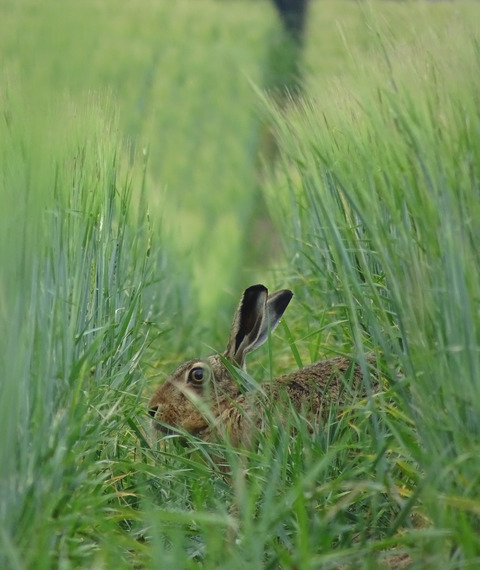
We studied habitat selection by a threatened farmland species and found that vegetation height in combination with agricultural field size was the most important explanatory variable. This has valuable implications for the management of arable areas, like the introduction of permanent set-asides covered by short vegetation.
Fine-scale population differences in Atlantic cod reproductive success: A potential mechanism for ecological speciation in a marine fish
- Pages: 11634-11644
- First Published: 31 October 2018
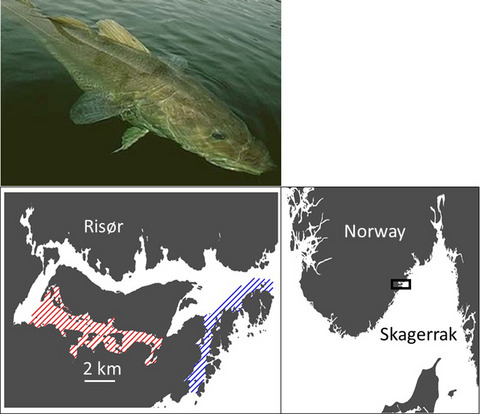
We document fine-scaled differences in individual reproductive success between co-spawning, spatially adjacent populations of Atlantic cod distinguished by differences in genetics and life history. Cod from inner- and outer-fjord populations were allowed to compete for mating and reproductive opportunities. Based on daily parentage assignments of more than 4,000 offspring, and accounting for phenotypic variability, reproductive success of outer-fjord cod was significantly lower than that of inner-fjord cod. Our results support the hypothesis that populations of broadcast-spawning marine fish can co-exist at very fine spatial scales.
The extended consequences of genetic conductivity: Mating distance affects community phenotypes in Norway spruce
- Pages: 11645-11655
- First Published: 31 October 2018
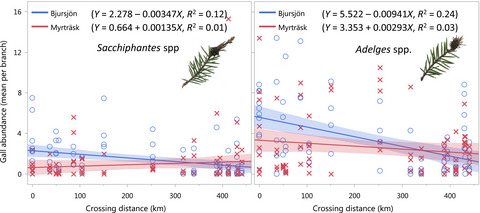
Anthropogenic landscape level alterations such as habitat fragmentation and long distance translocation of genetic material are currently altering the genetic connectivity and structure of forest tree populations globally, with potentially important consequences for dependent organisms. We show here that genetic connectivity among Norway spruce populations as manipulated by controlled crossing affected the composition of a small community of galling adelges. This finding suggests that the effect of alteration of genetic conductivity and structure can go beyond populations to affect whole communities.
Testes mass in the livebearing fish Brachyrhaphis rhabdophora (Poeciliidae) varies hypoallometrically with body size but not between predation environments
- Pages: 11656-11662
- First Published: 08 November 2018
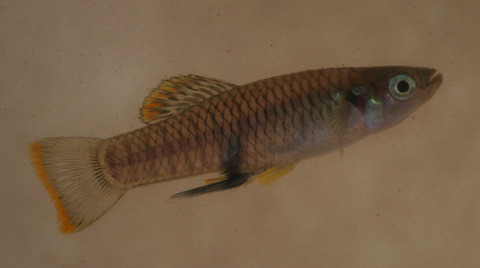
We considered potential causes of variation in male reproductive allocation in the livebearing fish Brachyrhaphis rhabdophora. Small males allocated proportionally more to testes mass than larger males (slope of testes mass to body mass was hypoallometric). However, there was no effect of predator environment on testes mass. In this system, body size and corresponding reproductive strategy appear to be better predictors of testes mass than mortality risk.
Environmental and evolutionary drivers of diversity patterns in the tea family (Theaceae s.s.) across China
- Pages: 11663-11676
- First Published: 08 November 2018
Relationships between humans and ungulate prey shape Amur tiger occurrence in a core protected area along the Sino-Russian border
- Pages: 11677-11693
- First Published: 30 October 2018

We use data from the recovering Amur tiger population in China from an extensive remote camera-trapping study to understand the effects of humans on tigers and their prey in both space and time. Our study showed human affected tigers both by direct temporal avoidance and indirectly via the negative influence of humans on the relative abundance of the primary wild prey of tigers.
Bush encroachment dynamics and rangeland management implications in southern Ethiopia
- Pages: 11694-11703
- First Published: 26 October 2018
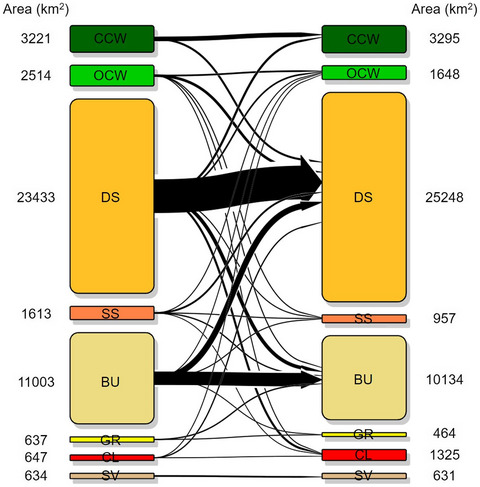
This paper develops a phenology-based approach to map rangeland vegetation states in southern Ethiopia, and examines transition pathways among states using the state-and-transition model. The results indicate that nearly 80% of landscape was dominated by woody plants in 2013 by following different transition pathways. The multiplicity in the transition pathways indicates opportunities that can be taken for positive transformation in the entire rangeland system and reverse the trend of bush encroachment.
Birds in the Himalayas: What drives beta diversity patterns along an elevational gradient?
- Pages: 11704-11716
- First Published: 08 November 2018

To increase our understanding of the underlying mechanisms of distributional patterns across elevation, we examine beta diversity patterns of birds in Gyirong Valley by sampling continuously over an elevational gradient and using high-resolution environmental or spatial variables to explain those diversity patterns. We find that bird beta diversity patterns are mainly structured by climate variables, with little contribution from spatial factors. These results provide further insight into the structuring of ecological communities, which can also help guide necessary management actions toward the preservation of biodiversity in the Himalayas and other mountain ecosystems.
Within-species trade-offs in plant-stimulated soil enzyme activity and growth, flowering, and seed size
- Pages: 11717-11724
- First Published: 31 October 2018
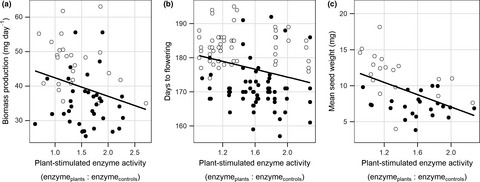
Soil microbial communities affect plant growth, survival, and reproduction. In turn, plants influence the composition and function of the soil microbiome, potentially resulting in beneficial feedbacks that enhance their fitness and establishment. We used a common garden study to test differences in plant-stimulated soil enzyme activity between lineages of the same species across developmental stages and assessed trade-offs between this novel trait and plant growth, flowering, and reproduction.
Differential sperm-egg interactions in experimental pairings between two subspecies and their hybrids in a passerine bird
- Pages: 11725-11732
- First Published: 31 October 2018
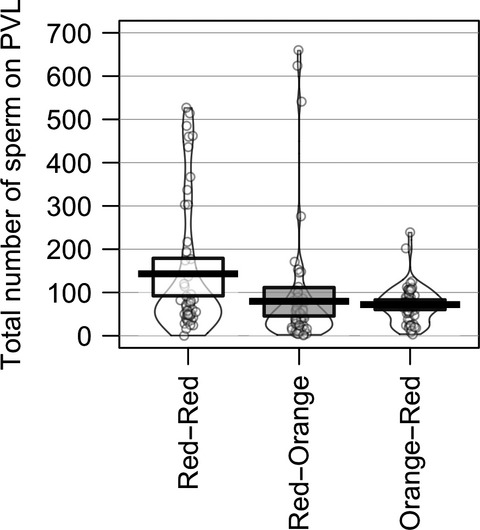
We investigated sperm-egg interactions in the recently diverged subspecies pairs of the long-tailed finch to explore potential PMPZ barriers to their hybridisation. We compared the number of sperm reaching the perivitelline layer of the ova, and hence the site of fertilization, in both intra- and inter-subspecies pairings and backcross pairings of F1 hybrid adults with one parental subspecies. We found significantly lower number of sperm reached the site of fertilization in a backcross pairing.
Males increase call frequency, not intensity, in response to noise, revealing no Lombard effect in the little torrent frog
- Pages: 11733-11741
- First Published: 31 October 2018
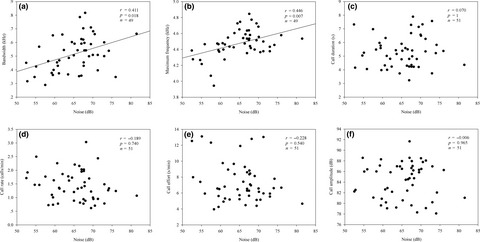
Noise and the plastic responses to noise have received increasing interest, yet few studies have examined changes in the fine structure of acoustic signals produced by vocalizing species in constantly noisy environments. Here, we suggest that stream noise drives males to alter call frequency and call as loudly as possible in streamside species in order to improve discriminability.
No support for the sexy-sperm hypothesis in the seed beetle: Sons of monandrous females fare better in post-copulatory competition
- Pages: 11742-11753
- First Published: 31 October 2018
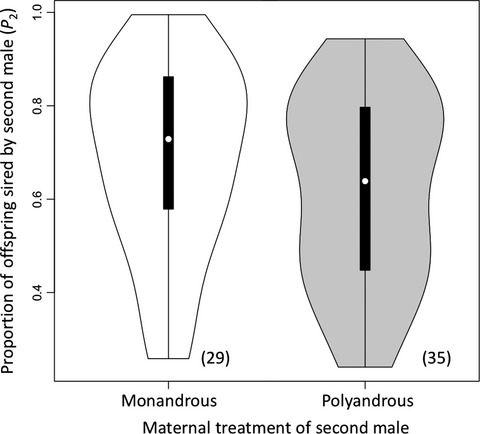
The sexy-sperm hypothesis posits that polyandrous females derive an indirect fitness benefit from multi-male mating because they increase the probability their eggs are fertilized by males whose sperm have high fertilizing efficiency, which is assumed to be heritable and thus conferred on their sons. Here I test this hypothesis in seed beetles but find the opposite—sons from monandrous females had significantly higher relative paternity, likely due to the production of larger ejaculates despite being smaller in size. This study is the first to provide empirical evidence for post-copulatory processes favoring monandrous sons and discusses potential explanations for the bias in paternity and implications for sperm competition theory.
Differing patterns of plant spinescence affect blue duiker (Bovidae: Philantomba monticola) browsing behavior and intake rates
- Pages: 11754-11762
- First Published: 25 October 2018
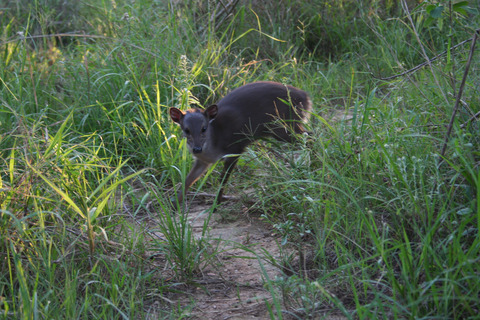
Through controlled, repeated measures experiments on habituated animals, we investigated how differing plant leaf and spine size and arrangement affected bite rate, bite size, time taken to take a first bite, instantaneous intake rate (IIR), and bite type used by a small antelope, the blue duiker (Philantomba monticola). Longer, closely spaced spines affected time to first bite, the type of bite used (cheek teeth or incisors), and IIR, while leaf size affected bite rate and bite size. We conclude that a combination of small leaves and dense spines limits plant tissue loss to blue duikers.
No support for cryptic choice by ovarian fluid in an external fertilizer
- Pages: 11763-11774
- First Published: 08 November 2018
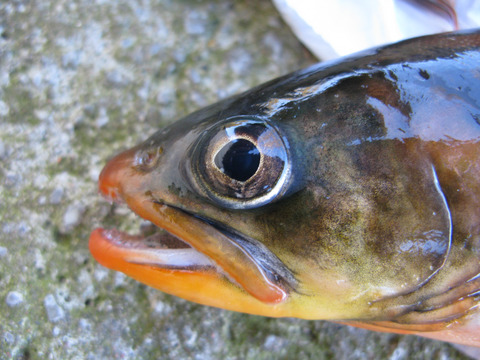
We tested the potential role of ovarian fluid (OF) as a selective environment for cryptic female choice in the Arctic charr (Salvelinus alpinus), an external fertilizer experiencing intense sperm competition. We physically separated the OF from the eggs of reproductively active females and reintroduced OF from another female to the eggs. In addition, two control groups were included. The eggs were then fertilized in vitro in a replicated split-brood design with sperm from two males under synchronized sperm competition trials. We found no effect of OF treatments on the relative paternity of the two competing males in each pair, providing no support for the hypothesis of cryptic female choice by OF.
Wildflower strips enhance pollination in adjacent strawberry crops at the small scale
- Pages: 11775-11784
- First Published: 06 November 2018
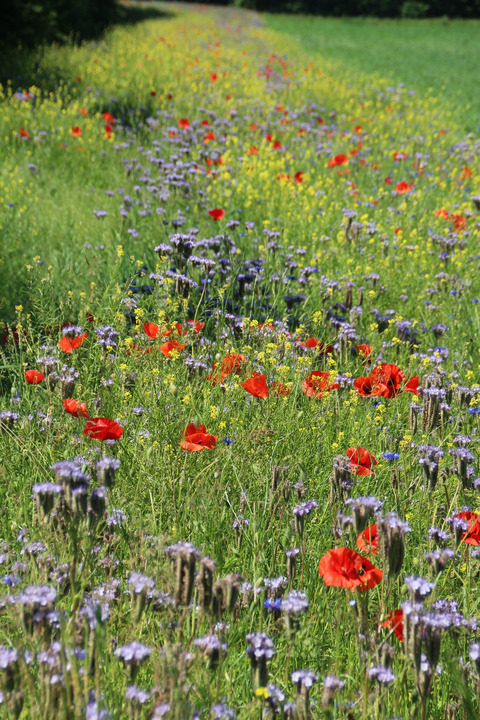
Wildflower strips (WFS) are increasingly used to counteract the negative consequences of agricultural intensification on pollinators. We therefore show whether WFS enhance pollination service in adjacent strawberry crops, and how such an effect depends on the distance from WFS. Moreover, we show which of the major pollinator groups might cause such an effect.
Consequences of swamp forest fragmentation on assemblages of vascular epiphytes and climbing plants: Evaluation of the metacommunity structure
- Pages: 11785-11798
- First Published: 14 November 2018
Conventional versus real-time quantitative PCR for rare species detection
- Pages: 11799-11807
- First Published: 14 November 2018
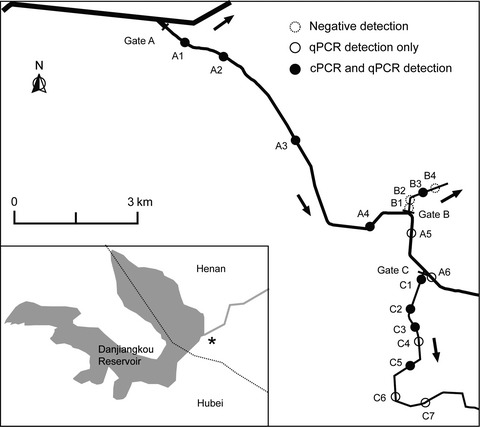
This manuscript presents a comprehensive comparison of conventional PCR and real-time quantitative PCR for detecting rare species from environmental DNA (eDNA) samples, with detection optimization and method verification using samples from different sources. We recommend real-time qPCR as a prioritized method for eDNA-based rare species detection, as well as the use of replicate samples to reduce false negatives.
Non-linear effect of sea ice: Spectacled Eider survival declines at both extremes of the ice spectrum
- Pages: 11808-11818
- First Published: 20 November 2018
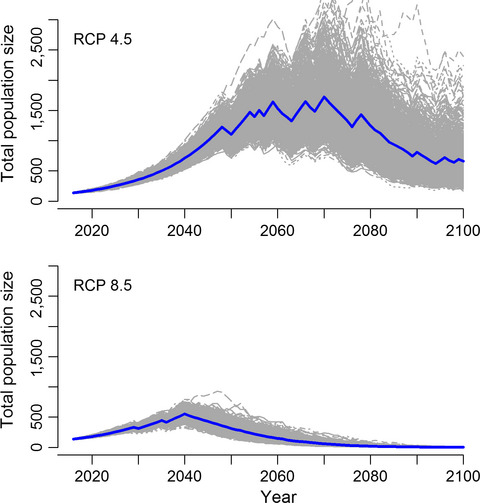
In this study, we quantified the relationship between Spectacled Eider over-winter survival and historical sea ice conditions on the Bering Sea. Once quantified, we explored how model-projected changes in sea ice concentrations in the Bering Sea would influence the future population size. This study revealed a previously unrecognized non-linear trend with sea ice, and projected population declines coincident with declining sea ice on the Bering Sea.
Effect of temperature on the biological parameters of the cabbage aphid Brevicoryne brassicae
- Pages: 11819-11832
- First Published: 11 November 2018
Male courtship preference during seasonal sympatry may maintain population divergence
- Pages: 11833-11841
- First Published: 22 November 2018
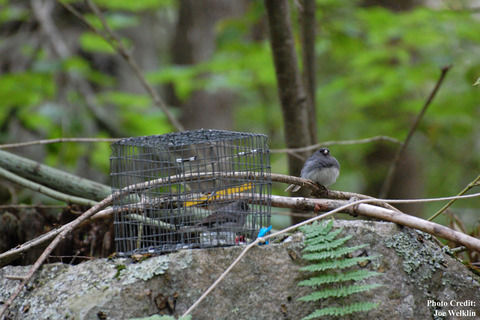
Diverging populations differing in migratory behavior can overlap in distribution seasonally, presenting an opportunity for gene flow. Differences in breeding phenology resulting from such differences in migratory behavior may favor individuals that exhibit mating preferences for mates with similar reproductive timing. In seasonally sympatric populations of dark-eyed juncos, a small songbird, sedentary males are found to exhibit a courtship preference toward sedentary females rather than migratory females, suggesting that male mate choice can help maintain prior divergence between populations that differ in migratory behavior.
The effects of a stressed inshore urban reef on coral recruitment in Suva Harbour, Fiji
- Pages: 11842-11856
- First Published: 20 November 2018

A relic inshore reef ecosystem adjacent to the Fijian capital of Suva was monitored monthly from July 2014 to July 2015 for coral recruitment, sedimentation rates, temperature and light intensity. Despite a major sewage spill in Suva Harbour in December 2014, this inshore site, exposed to extreme environmental stress, recorded no significant differences in coral spat abundance on artificial substrata compared to an remote inshore site (except for the family Poritidae); with a total yearly spat abundance of 106 inshore and 132 offshore. The lack of differences in coral spat recruitment rates suggests that settling larvae may be unable to distinguish between sites probably as a consequence of a distortion of environmental cues arising from extensive anthropogenic disturbances.
Temporal changes in Weddell seal dive behavior over winter: Are females increasing foraging effort to support gestation?
- Pages: 11857-11874
- First Published: 23 November 2018

We assess the shifts in foraging behavior associated with successfully carrying a pregnancy to term in Weddell seals. Gestation was associated with increased foraging effort (dive duration, depth, time each day diving, fewer rest periods between dive bouts), and thus reproductive females operated closer to their physiological dive limits. This study is one of the first to identify increases in foraging effort to accommodate the energetic costs of fetal growth in a top predator.
Genetic patterns in peripheral marine populations of the fusilier fish Caesio cuning within the Kuroshio Current
- Pages: 11875-11886
- First Published: 14 November 2018
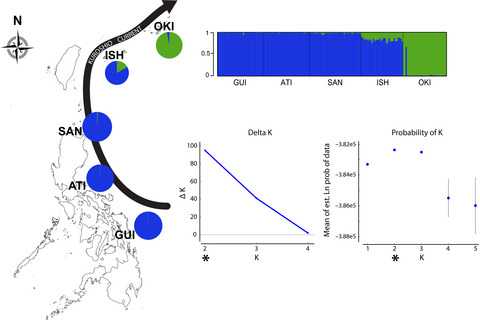
Using a panel of 2,677 RADseq-generated single nucleotide polymorphisms, we examined the genetic patterns in Caesio cuning populations within the Kuroshio Current relative to the expectations of the central-peripheral population model. Results from 174 genotyped specimens indicated the presence of two genetic clusters, isolation-by-distance, and edge effects, including decreased effective population sizes, and increased relatedness in peripheral populations.
Decreasing brown bear (Ursus arctos) habitat due to climate change in Central Asia and the Asian Highlands
- Pages: 11887-11899
- First Published: 20 November 2018
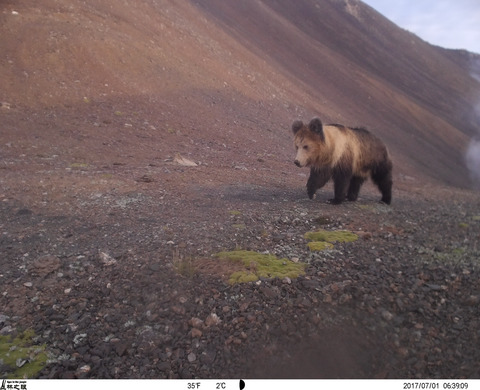
Climatic change may decrease brown bear’s suitable habitat. Decrease suitability might consecutively increase possible human–bear conflicts. Our results help to manage brown bear populations and design future conservation policies. More protected areas and corridors should be established to connect habitats.
Killer whales (Orcinus orca) in Iceland show weak genetic structure among diverse isotopic signatures and observed movement patterns
- Pages: 11900-11913
- First Published: 14 November 2018

Killer whales in Iceland show intrapopulation variation of isotopic niches and, while some individuals appear to specialize on herring and follow it year-round, others feed upon herring only seasonally or opportunistically. We investigate the level of genetic differentiation within the population using a multivariate clustering technique and existing data on individual isotopic niche, observed movement patterns and social association for 61 genotyped photo-identified individuals. Spatial clustering based on microsatellites identified three genetic units that were not socially segregated and corresponded to differences in isotopic signatures, mitochondrial haplotypes and observed movement patterns, but genetic differentiation was weak (FST < 0.1) suggesting ongoing gene flow or recent separation of the genetic units.
Rebel honeybee workers have a tendency to become intraspecific reproductive parasites
- Pages: 11914-11920
- First Published: 31 October 2018
Ensemble approach for potential habitat mapping of invasive Prosopis spp. in Turkana, Kenya
- Pages: 11921-11931
- First Published: 21 November 2018
Local adaptation in mainland anole lizards: Integrating population history and genome–environment associations
- Pages: 11932-11944
- First Published: 06 November 2018
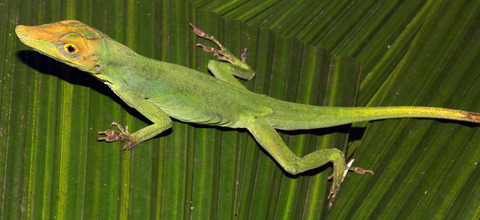
This study tests for potentially adaptive genotypes in two anole lizard species that span a pronounced climatic gradient in South America. To examine whether local adaptation has been constrained by population structure and history, we also estimate effective population sizes, divergence times, and gene flow under a coalescent framework. We find signatures of genome–environment association and identified several candidate genes involved with metabolism, immunity, development, and cell signaling in Anolis punctatus, but found no association between genomic diversity levels and environmental gradients in Anolis ortonii. Our results suggest that local adaptation has not been constrained by population structure and history in these co-distributed species, and that contrasting signatures of adaptation between species are not associated with dissimilar environmental space occupancies.
Dissecting a potential spandrel of adaptive radiation: Body depth and pectoral fin ecomorphology coevolve in Lake Malawi cichlid fishes
- Pages: 11945-11953
- First Published: 06 November 2018
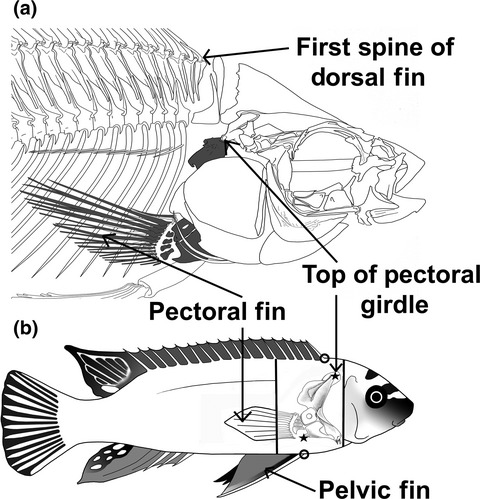
This study uses an improved phylogenetic hypothesis for a diverse set of Lake Malawi cichlid fishes to test the evolutionary association between body depth, the height of the pectoral girdle, and the area of the pectoral fins. Body depth is often assumed to be functionally important and an adaptively diverging trait in many groups of fishes, but few studies, has examined the internal anatomy that gives rise to this trait. The evidence for extensive coevolution of body depth with pectoral fin morphology that we find for the Lake Malawi cichlids surprisingly suggests that body depth could often diverge simply as a by-product of being tightly linked to ecomorphological divergence of other important anatomical structures such as the pectoral girdle.
Drought and grazing drive the retrogressive succession by changing the plant–plant interaction of the main species in Inner Mongolia Steppe
- Pages: 11954-11963
- First Published: 20 November 2018

The combined effect of drought stress and grazing disturbance on shaping plant–plant interactions is the key process of retrogressive succession in Inner Mongolia steppe, China. We conducted a competition experiment to explore how Stipa grandis is replaced by the other three species during the retrogressive succession. (a) Neighbor species could help Stipa krylovii to increase its tiller number but inhibit S. grandis's tiller number under mowing treatment. (b) Mowing disturbance played a positive role in Artemisia frigida expanding in medium–heavy-degraded region. (c) The higher tolerance to drought stress and lower competitive capacity enabled Cleistogenes squarrosa to be dominant species in heavy-degraded region but not in stable or light-degraded region. The present study provided evidences for species replacement in retrogressive succession of S. grandis communities.
Environmental DNA analysis as a non-invasive quantitative tool for reproductive migration of a threatened endemic fish in rivers
- Pages: 11964-11974
- First Published: 06 November 2018
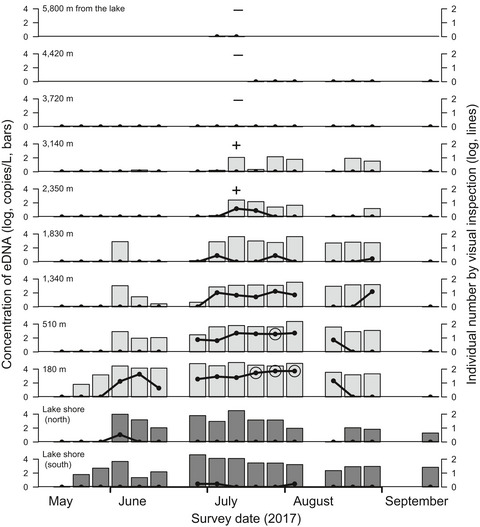
The reproductive migration of a threatened endemic fish was successfully monitored by quantitative PCR of species-specific environmental DNA (eDNA), the usefulness of which has previously been considered limited in this context. eDNA analysis showed a larger distribution in the peak reproductive season and longer residence time at any given site than the visual inspection. We propose that eDNA analysis has greater potential for quantitatively monitoring reproductive fish migrations under certain conditions than considered.
Effects of removing woody cover on long-term population dynamics of a rare annual plant (Agalinis auriculata): A study comparing remnant prairie and oldfield habitats
- Pages: 11975-11986
- First Published: 11 November 2018

Woody plant colonization endangers grasslands. Our 17-year surveys of a rare annual plant in a remnant prairie and oldfield shows (a) that woody removal in the prairie allowed population recovery without seeding, (b) the important role of annual precipitation, and (c) suggests negative density-dependent processes. Our rapid field methodology and use of an abundance-occupancy visualization approach promises to have wide applicability for ecologists and conservation biologists.
Variation in three community features across habitat types and scales within a 15-ha subtropical evergreen-deciduous broadleaved mixed forest dynamics plot in China
- Pages: 11987-11998
- First Published: 11 November 2018
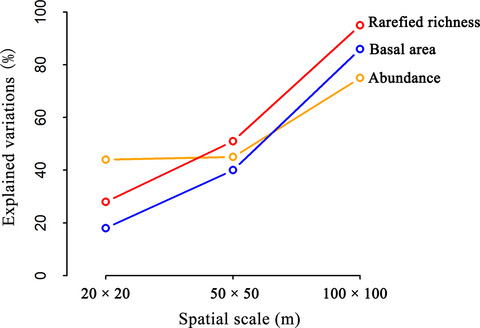
We used data from a 15-ha (300 × 500 m) forest dynamic plot (FDP) of an old-growth EDBMF to examine the patterns and determinants of the three community features (stem abundance, rarefied species richness, and basal area) in three habitat types (ridge, hillside, and foothill) and at three spatial scales (20 × 20, 50 × 50, and 100 × 100 m). Our study demonstrated that environmental factors had great impacts on the plant diversity and forest structure in the EDBMFs, especially the soil factors such as pH. In addition, the importance of the environmental determinants on these community features was highly related to the spatial scale.
Response of soil organic carbon to vegetation degradation along a moisture gradient in a wet meadow on the Qinghai–Tibet Plateau
- Pages: 11999-12010
- First Published: 06 November 2018
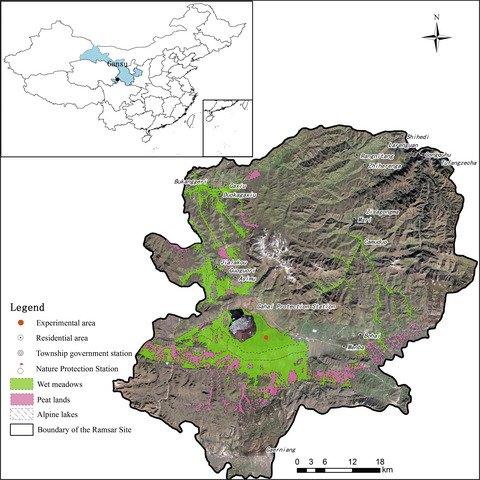
This study was conducted to determine the dynamics of soil organic carbon (SOC) under the influence of four categories of vegetation degradation in a wet meadow along a moisture gradient. Vegetation and moisture loss caused significant reductions in SOC. SOC significantly correlated positively with soil water content, aboveground biomass, and belowground biomass, but significantly correlated negatively with soil temperature and bulk density (p < 0.05). Soil organic carbon also significantly correlated with total nitrogen, total phosphorus, and total K. Carbon sequestration roles of the wet meadows are significantly affected by moisture and vegetation changes.
Evaluating effective population size and genetic diversity of a declining kit fox population using contemporary and historical specimens
- Pages: 12011-12021
- First Published: 08 November 2018

Loss of genetic diversity has serious conservation consequences, but is difficult to evaluate without developing long-term, multigenerational datasets. We analyzed genetic samples from museum specimens and contemporary scats to evaluate temporal changes in genetic diversity and Ne for kit foxes in western Utah. We found significant declines in effective population size, but not genetic diversity; genetic diversity was likely maintained by low levels of immigration.
Genetic diversity in fishes is influenced by habitat type and life-history variation
- Pages: 12022-12031
- First Published: 11 November 2018
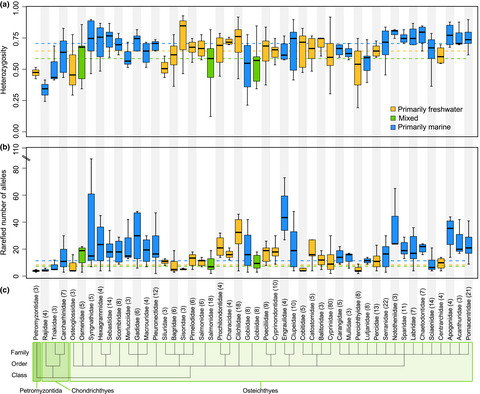
In order to better understand the factors that can explain the amount of genetic diversity in wild populations of fishes, we collected estimates of genetic diversity (mean heterozygosity and mean rarefied number of alleles per locus) along with habitat associations, conservation status, and life-history information for 463 fish species. We found that both habitat and life-history characteristics drive patterns of genetic diversity in fishes, while conservation status is a surprisingly poor predictor of genetic diversity among both marine and freshwater fish species.
Thermal tolerance of Mediterranean marine macrophytes: Vulnerability to global warming
- Pages: 12032-12043
- First Published: 11 November 2018

Mediterranean warming is raising concerns about the vulnerability of marine biodiversity in this semi-enclosed sea. We experimentally tested the thermal niche of two seagrass species and four seaweed species from a Mediterranean coastal community. We found substantial differences in species vulnerability to global warming within local ecosystems that could involve biodiversity changes in a warmer Mediterranean.
Social structure contains epidemics and regulates individual roles in disease transmission in a group-living mammal
- Pages: 12044-12055
- First Published: 11 November 2018
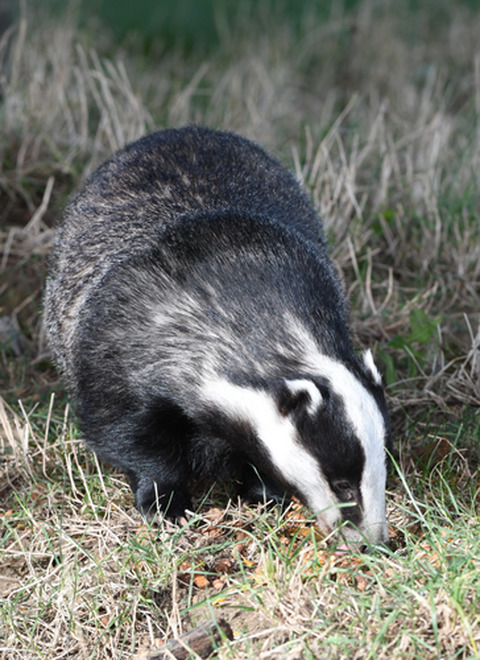
Through the analysis of an exceptionally detailed dataset on contact structure within a high-density population of European badgers Meles meles, we show that a modular contact network produced by spatially structured stable social groups lead to smaller epidemics, particularly for infections with intermediate transmissibility. The key advance is that we identify considerable variation among individuals in their role in disease spread, with these new insights made possible by the detail in the badger dataset.
Population genetics and evolutionary history of the wild rice species Oryza rufipogon and O. nivara in Sri Lanka
- Pages: 12056-12065
- First Published: 11 November 2018
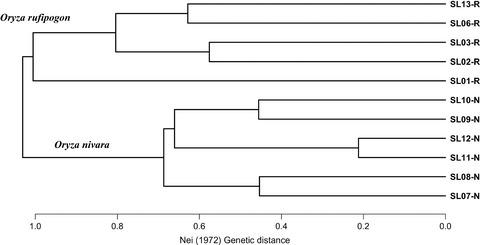
We provide the first report on the population genetics of two wild rice species (Oryza rufipogon and O. nivara). We demonstrated a high level of genetic diversity of the natural populations of the two species in Sri Lanka and explored the evolutionary history and population dynamics of the two species.
Methuselah’s daughters: Paternal age has little effect on offspring number and quality in Cardiocondyla ants
- Pages: 12066-12072
- First Published: 08 November 2018
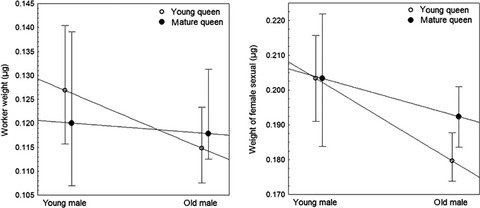
The age of a male mating partner typically has a strong effect on the fitness of the female and its offspring. Males of the ant Cardiocondyla obscurior are characterized by an extraordinary lifelong spermatogenesis. Here we show that old age of C. obscurior males neither effects fecundity and longevity of the queen nor the size of the offspring, suggesting negligible reproductive senescence.
Contrasting patterns of neutral and functional genetic diversity in stable and disturbed environments
- Pages: 12073-12089
- First Published: 11 November 2018
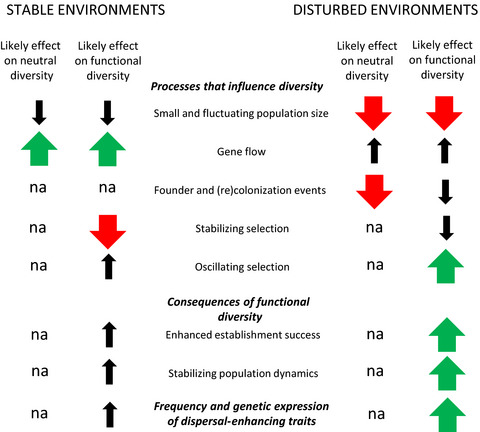
We explore the consequences for within-population genetic diversity of ecological and evolutionary processes associated with contrasting or changing environments using data for 20 populations of dispersal and color polymorphic Tetrix undulata pygmy grasshoppers. Functional phenotypic diversity and outlier genetic diversity were both greater than neutral genetic diversity in disturbed habitats and smaller than neutral diversity in stable habitats. Results exemplify and demonstrate that random and deterministic processes differently influence neutral and functional diversity and that the relative importance of these processes varies according to ecological settings.
Breeding for resilience to increasing temperatures: A field trial assessing genetic variation in soft red winter wheat
- Pages: 12090-12100
- First Published: 08 November 2018
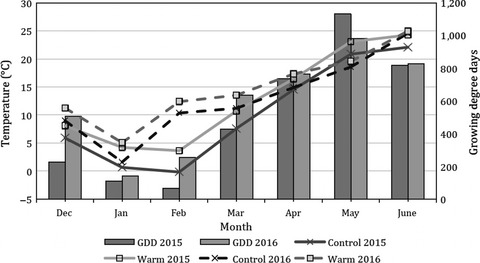
Increasing global temperatures will reduce wheat yield and productivity. To identify genetic variation for resilience to warming, we screened a set of diverse wheat genotypes in a warmed and a control environment. On average, grain yield was significantly (p < 0.05) reduced in the warmed environment though we identified genotypes which had higher yields in response to warming in both years.
Divergence in female damselfly sensory structures is consistent with a species recognition function but shows no evidence of reproductive character displacement
- Pages: 12101-12114
- First Published: 20 November 2018
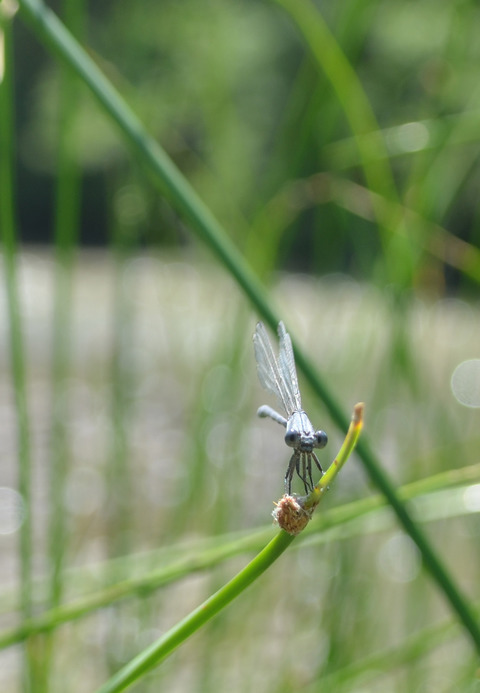
Physical touch is a relatively overlooked sensory modality that could have important effects on mating decisions, particularly in odonates (dragonflies and damselflies). We quantified and compared female sensory structures across multiple sympatric and allopatric populations of two recently diverged, hybridizing damselfly species. Our goals were to (a) quantify variation in mechanoreceptor traits as in inroad for dissecting the mechanistic basis of tactile discrimination and (b) test for patterns of reproductive character displacement (RCD) in these species.
Indirect effects of a large mammalian herbivore on small mammal populations: Context-dependent variation across habitat types, mammal species, and seasons
- Pages: 12115-12125
- First Published: 11 November 2018
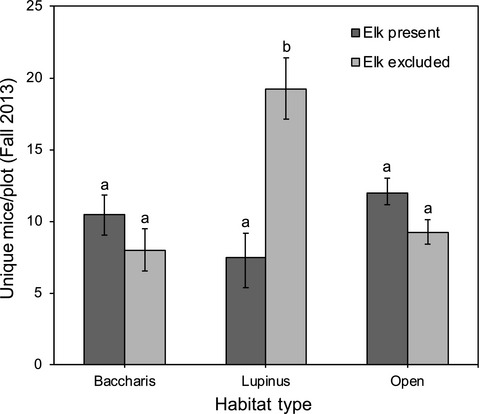
We summarize results from a 16-year-old exclosure experiment to examine the indirect effects of a large mammalian herbivore on three co-occurring small-mammal species during two seasons and across an extremely heterogeneous landscape. Our work clearly demonstrates that the indirect effects of elk on small mammals can be both positive and negative and is strongly context-dependent, varying among habitat types, mammal species, and seasons.
Drought weakens the positive effects of defoliation on native rhizomatous grasses but enhances the drought-tolerance traits of native caespitose grasses
- Pages: 12126-12139
- First Published: 08 November 2018
Range-wide genomic data synthesis reveals transatlantic vicariance and secondary contact in Atlantic cod
- Pages: 12140-12152
- First Published: 16 November 2018
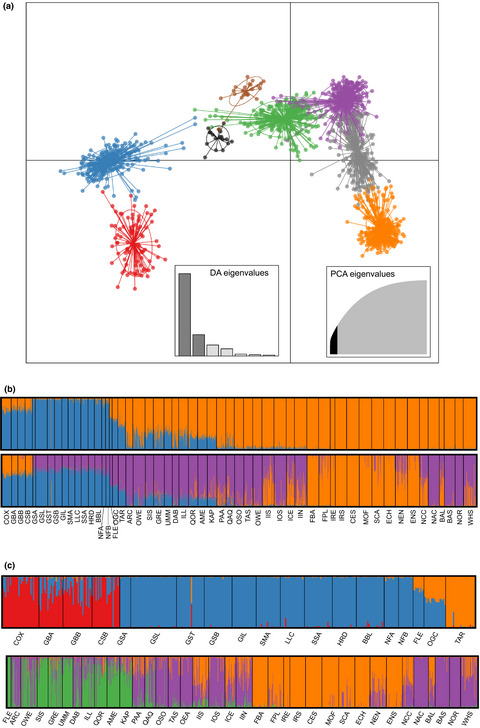
We use a data-synthesis approach to combine three previously generated SNP datasets Atlantic cod and investigate population structure and phylogeographic history across the species’ range. We report a strong genetic break between the East and West Atlantic attributable to glacial vicariance during the Last Glacial Maximum and find evidence to support the hypothesis the recolonization of Greenland was facilitated by East Atlantic populations as well as secondary contact between the East and West Atlantic.
A test of desert shrub facilitation via radiotelemetric monitoring of a diurnal lizard
- Pages: 12153-12162
- First Published: 16 November 2018
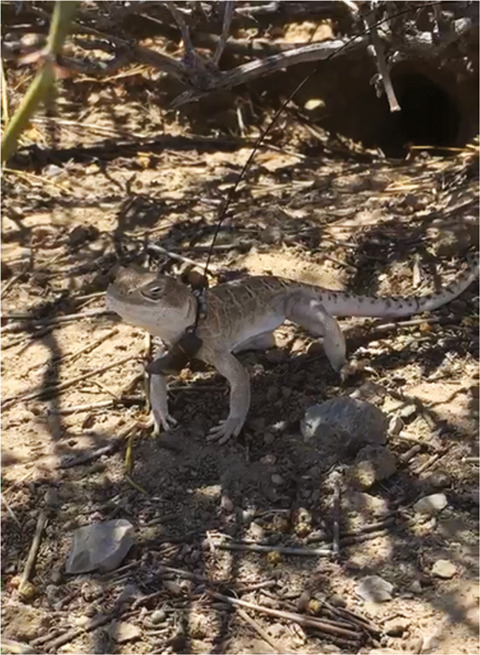
We investigated the facilitation of a desert lizard by a desert shrub through the use of radiotelemetry. We found that lizards were associated with shrubs significantly more than predicted under null expectations, and association was correlated with peak daytime temperatures. We conclude that desert shrubs provide potential benefits to desert ectotherms by providing thermoregulatory opportunity.
Allocation of forest net primary production varies by forest age and air temperature
- Pages: 12163-12172
- First Published: 14 November 2018
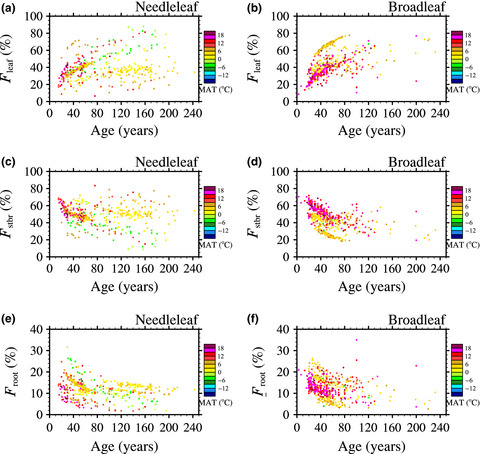
A datase of natural Chinese forests was used to explore the dependences of net primary production partition among foliage, stem and branch, and root on forest age, and mean annual temperature. For all forest types, younger plants usually allocated a higher proportion of the NPP to stems, branches, and roots. MAT was negatively correlated with the proportions of the NPP allocated to leaves and roots, while proportions of the NPP allocated to stems and branches were positively dependent on MAT.
Maladaptive secondary sexual characteristics reduce the reproductive success of hybrids between native and non-native salmonids
- Pages: 12173-12182
- First Published: 14 November 2018
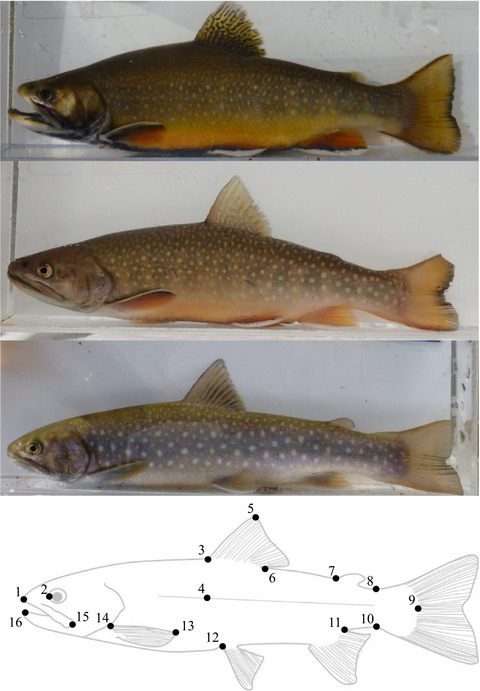
We hypothesized that maladaptive secondary sexual characteristics reduces the fitness of hybrids. To test this, we evaluated the reproductive success of introduced brook trout, native white-spotted charr and their hybrids in a natural stream of Japan, where the two parental species show marked differences in male secondary sexual characteristics, such as elongated jaws and deeper bodies. Our results suggest that sexual selection on male secondary sexual characteristics can be an important factor determining the hybrid fitness in the wild.
Interspecific transfer of parasites following a range-shift in Ficedula flycatchers
- Pages: 12183-12192
- First Published: 11 November 2018
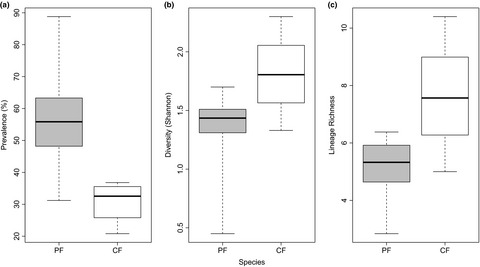
This study investigates the diversity and prevalence of avian malaria parasites in collared and pied flycatchers and the extent of host-switching in host secondary contact. We find that prevalence and diversity vary widely across the ranges of both species. Additionally, in secondary contact, there is a unidirectional transfer of parasites from the pied flycatcher to the collared flycatcher.
Coral epigenetic responses to nutrient stress: Histone H2A.X phosphorylation dynamics and DNA methylation in the staghorn coral Acropora cervicornis
- Pages: 12193-12207
- First Published: 23 November 2018

Nutrient pollution constitutes one of the main drivers of global change in the coastal oceans. The present work constitutes the first study monitoring two types of epigenetic mechanisms during a 7-week-long experiment in which staghorn coral fragments were exposed to nutrient stress. This work sheds light into the role and the interactions among different mechanisms mediating epigenetic effects in corals.
Persistence at the final stage of volcanic island ontogeny: Abiotic predictors explain native plant species richness on 111 remote Pacific atolls
- Pages: 12208-12220
- First Published: 20 November 2018
Seascape genetics of the spiny lobster Panulirus homarus in the Western Indian Ocean: Understanding how oceanographic features shape the genetic structure of species with high larval dispersal potential
- Pages: 12221-12237
- First Published: 16 November 2018
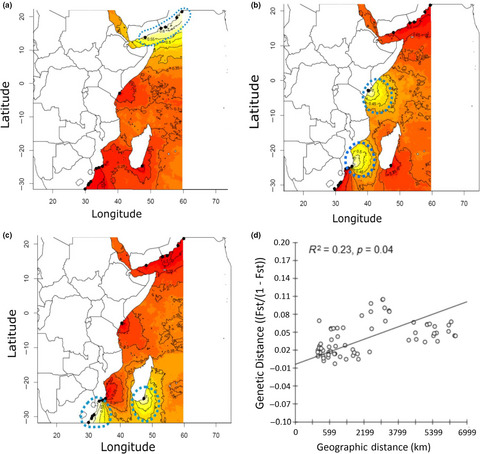
We examined the finer-scale population genetic structure and phylogeography of the spiny lobster Panulirus homarus in the Western Indian Ocean. A seascape genetics approach was used to relate the observed genetic structure (21 microsatellite loci) to ocean circulation patterns, to determine the influence of latitude, sea surface temperature (SST), and ocean productivity (chl-a) on population-level processes. Genetic clusters correspond to three putative subspecies, P. h. rubellus from the SW Indian Ocean, P. h. megasculptus from the NW Indian Ocean, and P. h. homarus from the tropical region in-between. Oceanography, latitude, and sea surface temperature were significantly associated with genetic differentiation between the three subspecies.
Demographic processes limit upward altitudinal range expansion in a threatened tropical palm
- Pages: 12238-12249
- First Published: 26 November 2018
Folivory has long-term effects on sexual but not on asexual reproduction in woodland strawberry
- Pages: 12250-12259
- First Published: 14 November 2018
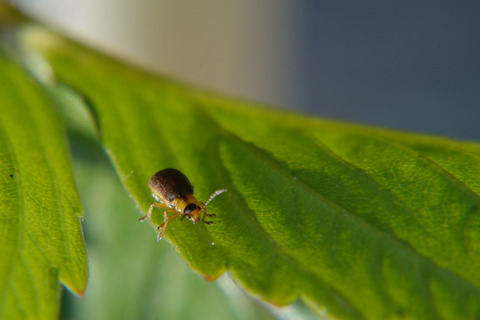
In a 2-year common garden experiment, we examined the effects of folivory by Galerucella tenella on compensation, as well as current and future sexual and clonal reproduction of woodland strawberry, Fragaria vesca. According to our results, woodland strawberry can tolerate moderate amounts of folivory in the short term but the negative effects on fitness appear later. In addition, the negative effects of folivory are consistently focussed on sexual reproduction while clonal reproduction is unaffected.
The effects of diet and mating system on reproductive (and post-reproductive) life span in a freshwater snail
- Pages: 12260-12270
- First Published: 16 November 2018
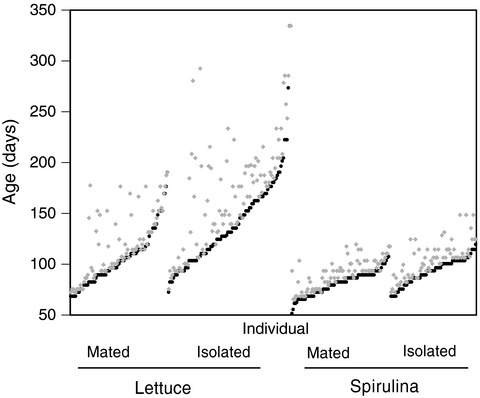
This is an experimental evaluation of reproductive and post-reproductive life span in a freshwater snail, exploring the effects of diet and mating system on fundamental aspects of the life history. Snails reared on a higher quality diet or allowed access to a mating partner suffered a reduced reproductive life span. A post-reproductive period exists under all conditions and its existence is discussed.
Scale-dependent home range optimality for a solitary omnivore
- Pages: 12271-12282
- First Published: 23 November 2018
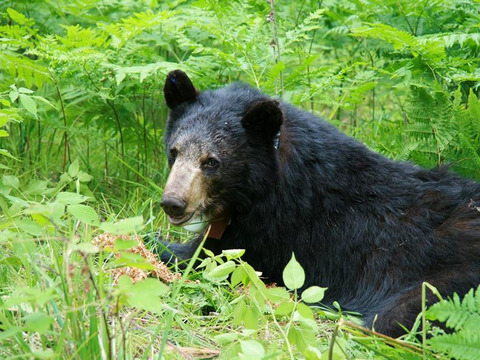
Spatial and temporal heterogeneity are fundamental mechanisms structuring home ranges. American black bears display a scale-dependent space use strategy: at larger spatial and temporal scales, productivity acted as the strongest limiting factor and energy maximizing was the dominant strategy, while an area minimizing strategy was exhibited seasonally, demonstrating the intrinsic plasticity of this adaptable omnivore.




